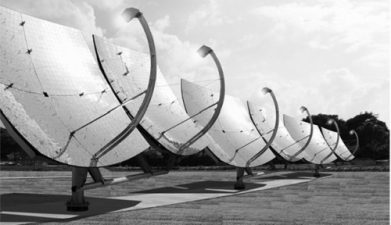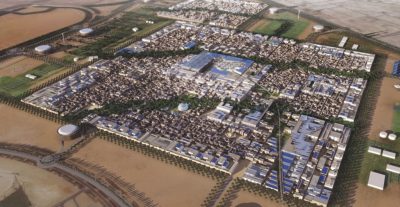 Another Chernobyl in the making? Does the Middle East need this risk?
Another Chernobyl in the making? Does the Middle East need this risk?
Friday’s devastating earthquake and tsunami waves in Japan have left that entire country in a state of shock, and power outages – even in the country’s capital, Tokyo. The 8.9 magnitude quake, the most massive Japan has ever experienced and the 7th largest in world recorded history, has not only caused a disastrous amount of property damage as well as well as loss of life, it has also resulted in some damage to a few of the country’s 52 nuclear power plants. The most serious effected are those nearer to the epicenter of the quake, especially the power plant at Fukushima I, located by the city of Okuma, 260 km from Tokyo. When the quake struck on Friday afternoon, March 11, the Japanese government ordered an immediate shutdown of this plant, and several others, including the newer Fukushima II plant located only about 11.5 km to the south.
 Areal view of Fukushima I Plant
Areal view of Fukushima I Plant
Due to fears of radioactive leakage, an immediate evacuation was ordered from an area within 20 km of the first plant, due to the plant’s not being able to cool down the plant’s nuclear fuel rods, as a result of damage caused by the earthquake and tsunami. The damage to the Fukushama plant has now resulted in an explosion occurring there which has “blown the roof” off of one of the reactors, causing significant radiation leakage.
Japan has had a “love-hate” relationship with nuclear energy, resulting from being the only country where nuclear bombs were exploded on its population at the end of WWII. Although the Japanese government has forbidden the development of nuclear energy for use in warfare, the country has been one of the world’s most prominent to use nuclear energy for producing electric power. This in itself seems a bit of a paradox, judging from its historical “connection” to the horrors of nuclear war; which are commemorated annually in the two cities where the bombs were dropped, Hiroshima and Nagasaki.
 Hiroshima and Nagasaki nuclear blasts
Hiroshima and Nagasaki nuclear blasts
Japan now depends on a third of its total power supplies from these nuclear power plants, which are scattered over the entire country, many in coastal areas to have the use of sea water for cooling nuclear fuel rods. Up till now, there haven’t been any major problems with these plants, despite the many earthquakes Japan experiences. As a result of damage caused by the March 11 earthquake, the government is currently in the process of make a “major assessment” to determine what needs to be done to make these plants more stable in the event of future earth quakes. That major assessment has now turned into a national emergency as at least 2 nuclear plants approach nuclear core meltdown.
Japan is not the only country that has embraced the use of nuclear energy for driving turbines to create electricity. Many other countries, including France, the U.K., Russia, and the USA have nuclear power plants as well.
 Bushehr Nuclear Plant (under construction)
Bushehr Nuclear Plant (under construction)
Enter the “nuclear age” in the Middle East. Iran now has a nuclear power plant at Bushehr, and other countries in the region, including Jordan, Qatar, and Saudi Arabia have plans to build them as well. Many areas of the Middle East are also in or near earthquake fault zones, including Iran, which is on the Mokran fault line, and where several major earthquakes have occurred. Jordan is planning a nuclear power plant to be built near Aqaba, and is on the Syria –African Rift fault line. Nuclear plants in these areas could face radioactive particle leakage situations similar to what is now occurring in Japan.
These possible dangers make many wonder why the use of nuclear energy for producing electricity is still so popular. This is especially so in Japan, with it’s nuclear past, and in the Middle East, where other fuels, such as natural gas and solar energy can be used instead. Iran’s desire for nuclear energy is said to stem from “other reasons” even though the Iranian government still insists it is developing nuclear energy for “peaceful purposes”. The same goes for other countries in the region, whose regimes are now worried about repercussions from popular uprisings in countries like Egypt, Tunisia, and Libya.
Bearing all of this in mind, countries in the Middle East might well reconsider the use of nuclear energy in this region.
Photo: NHK World/CNN:
Read more on nuclear energy and earthquake risks in the Middle East:
Qatar and Russia Co-op on Nuclear Energy
Nuclear Power Continues World Dependence on Middle East Oil
Is Iran Ready for the Next Tsunami?
Jordan Explores the Nuclear Option, despite Alternative Plans for “Clean” Fuel



